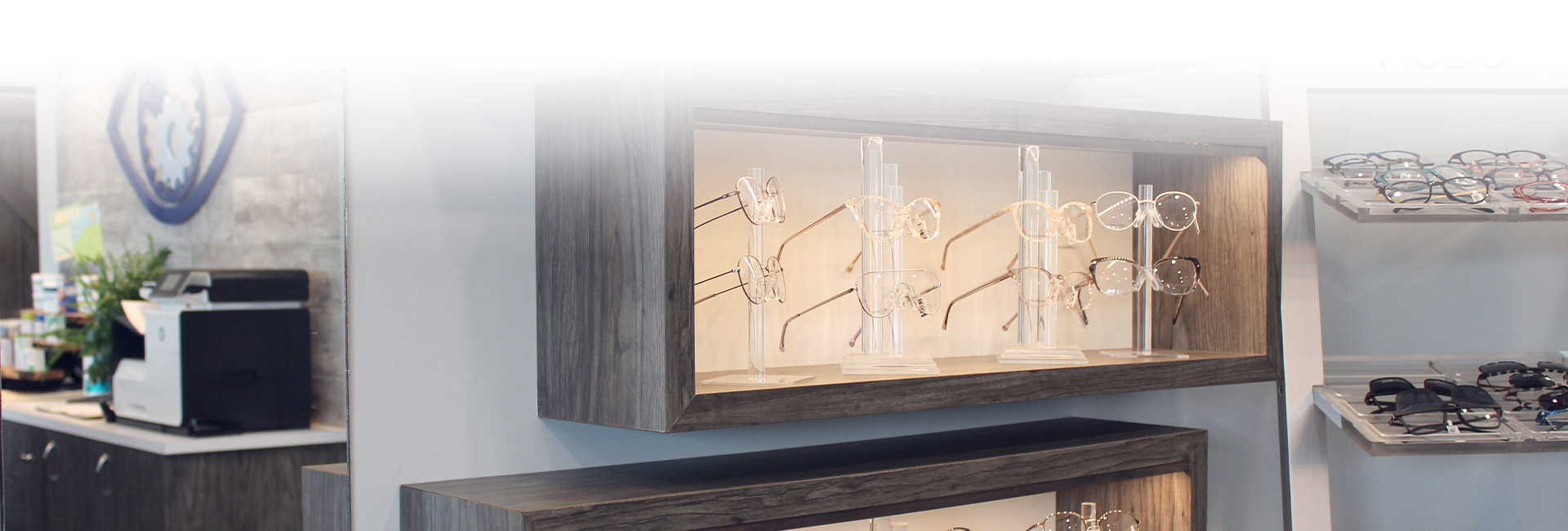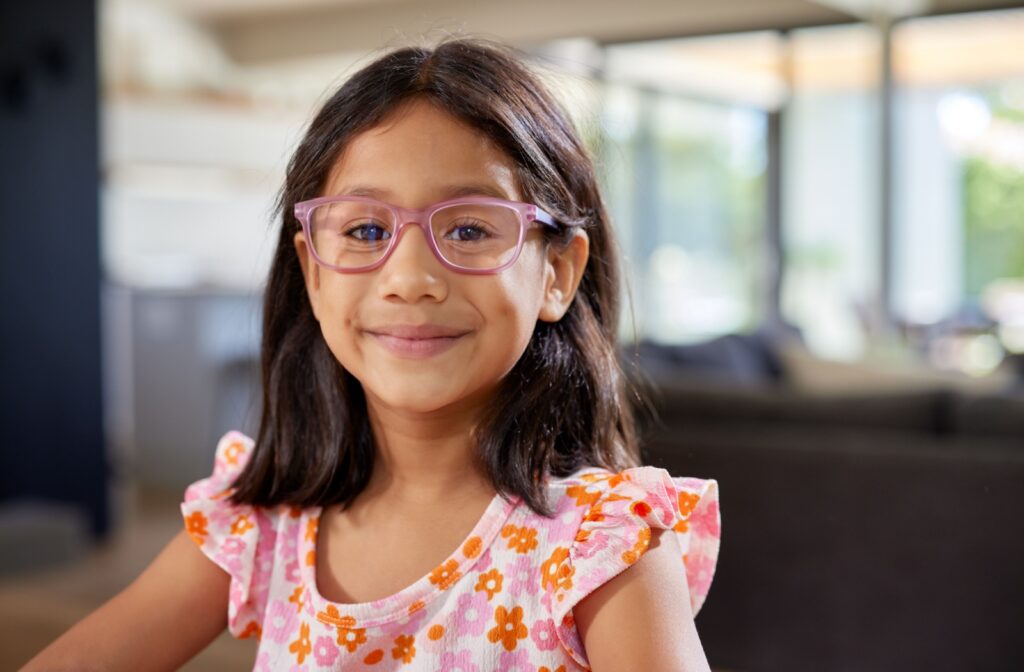If your child often squints to see the board at school or needs to move closer to the TV, it might be more than just a phase. These behaviours are frequently telltale signs of vision problems like myopia. Sooner or later, you’ll need to visit your optometrist.
In fact, with society’s increasing reliance on digital screens, we’re seeing more and more children developing myopia. The right glasses can make all the difference in protecting children’s vision for years to come.
Myopia glasses are designed to manage myopia by slowing the elongation of the eye while also correcting your child’s vision.
Myopia: A Brief Overview
Many Canadians need corrective lenses to help them see clearly, and refractive errors are usually the underlying culprit. Take myopia, for example. It occurs when the eye grows too long from front to back, or when the cornea is too curved, causing distant objects to appear blurry while close-up objects remain clear.
Think of it like this: a myopic eye is like a camera that’s focused too close, making faraway things look fuzzy.
Myopia typically develops during childhood and tends to worsen as kids grow. As the eye continues elongating and vision worsens, this stresses the eye’s delicate structures, increasing the risk of developing serious eye conditions later in life.
That’s why early intervention with the right type of glasses is so important.
Myopia Glasses vs Standard Glasses: What’s the Difference?
Glasses have come a long way since their inception. Lens technology is sleeker and more modern than it used to be, and quality continues to improve. But if all prescription glasses correct vision, then what’s the deal with myopia glasses?
Myopia control glasses do more than just correct vision.
Standard glasses work by focusing light correctly onto the retina. They help your child see clearly in the distance, but they don’t address the underlying progression of the condition. They’re treating a symptom, not the underlying cause.
Myopia control glasses take a different approach. These lenses have specific focusing patterns that slow the elongation of the eye and reduce the rate at which myopia progresses, thereby helping to preserve your child’s future vision.
The Science Behind Myopia Control
Myopia control isn’t just about making sure your child can see the chalkboard clearly—it’s about protecting their long-term eye health. We cannot reverse or cure myopia, but we can slow myopia’s progression and therefore lower associated risks.
The concept is relatively straightforward: by managing how light enters the eye, myopia glasses can influence the eye’s growth signals. When light focuses properly on the retina but creates a controlled blur in the periphery, this slows elongation of the eyeball.
Research shows that myopia control can reduce progression by 50% in many children. That might not sound like much, but over several years of a child’s development, this reduction can make a significant difference in their final prescription and long-term eye health.

Types of Myopia Control Glasses
Though the details differ, myopia glasses share one common goal: slowing myopia progression while correcting vision. There are two major approaches:
Peripheral Defocus Lenses
These lenses focus light in a way that gives your child clear central vision while gently blurring peripheral vision (this is called peripheral defocus), which helps signal the body to slow elongation of the eye. It may take some time for your child to adjust, but after this phase, these glasses look and feel like any other pair.
Dual Focus Lenses
These lenses have two different focal zones–one for clear distance vision and another that creates a defocus area to help slow eye elongation. Just like peripheral defocus lenses, it may take some time for your child to adjust to their design, but once this phase is over, these glasses feel comfortable.
The Importance of Myopia Control
Myopia control represents a shift in how we think about children’s vision care. Instead of simply correcting vision problems as they arise, we’re now focusing on preventing them from getting worse.
The earlier myopia control begins, the more effective it tends to be. Children’s eyes are still developing, making them more responsive to these interventions. Starting myopia control when your child first develops nearsightedness can have significant benefits throughout their life.
A Comprehensive Approach
There’s no one myopia control method, but taking a more comprehensive approach fosters better outcomes. This might include:
- Regular eye exams to monitor progression
- Lifestyle modifications like increased outdoor time
- Proper visual hygiene for screen use
- Exploring other myopia control options if needed
The value of myopia control all comes down to fostering better visual outcomes and health for your child. The key is finding the right treatment approach, and your optometrist is here to help.
Healthy Eyes Are Happy Eyes
Myopia control is changing how we view children’s vision care. Instead of only focusing on vision correction, we’re addressing the underlying issues that cause myopia to worsen. The sooner we start, the better the outcome. Setting your child up for success includes investing in their vision. It’s time to explore myopia control options with Beyond 20/20 Optometry. Connect with our team to book an appointment and support your child’s vision every step of the way.




